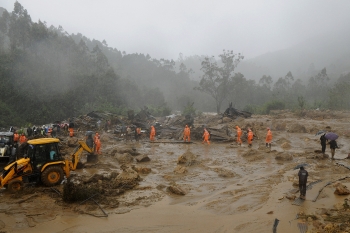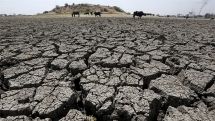Iceberg larger than New York City breaks off in Antarctica
| Climate change and Artic heat: The reasons behind snowstorm in Texas | |
| Asia Most Affected By Climate Change | |
| India: Hottest decade on record, more than 1,500 people killed in 2019 |
The iceberg measuring 492 feet thick and 490 square miles broke off from the Brunt Ice Shelf on Friday, according to a press release from the British Antarctic Survey (BAS). The section, measuring larger than New York City, cleaved near BAS's Halley Research Station, which was closed for the season earlier this month.
The research station likely will not be impacted by the break. Researchers say the first indication of calving came last November when a crack known as the North Rift became active, rupturing towards a chasm known as the Stancomb-Wills Glacier Tongue almost 23 miles away.
"The iceberg was formed when the crack widened several hundred meters in a few hours on the morning of 26th Feb, releasing it from the rest of floating ice shelf," BAS noted in a press release.
BAS Director of Operations Simon Garrod called the break "a dynamic situation." Three cracks have been detected over the course of a decade, including the Halloween Crack and Chasm 1.
The first indication that the glacier would break off occurred in November when a new chasm – called North Rift – headed toward another large chasm about 20 miles away. In January, the rift pushed northeast at more than half a mile each day, cutting through the 490-foot thick floating ice shelf.
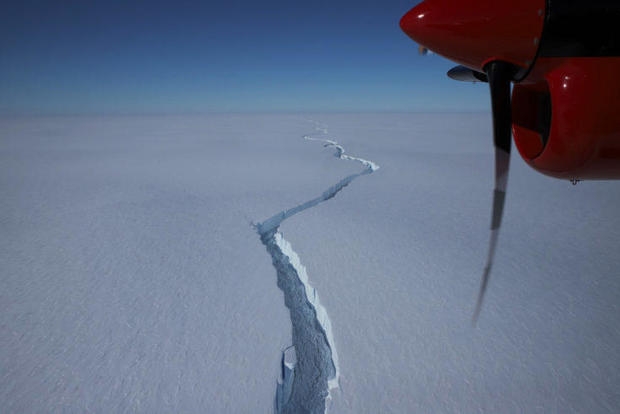 |
The iceberg formed after the crack widened on the morning of Feb. 26, "releasing it from the rest of [the] floating ice shelf," according to the BAS.
The BAS monitors the ice shelf daily using an automated network of high-precision GPS instruments surrounding Halley Research Station, which measures how the ice shelf is deforming and moving, Francis said. The teams also use satellite images from ESA, NASA, and the German satellite TerraSAR-X.
"Halley Station is located inland of all the active chasms, on the part of the ice shelf that remains connected to the continent," said Francis. "Our network of GPS instruments will give us early warning if the calving of this iceberg causes changes in the ice around our station."
The 12-person team left Halley Research Station early last month, which is now closed for the Antarctic winter. The station was safe from the break since it relocated inland in 2016 to avoid the paths of two chasms -- named "Chasm 1" and "Halloween Crack."
Francis added that in the coming weeks or months, the iceberg may move away, or aground and remain close to the Brunt Ice Shelf.
"Our job now is to keep a close eye on the situation and assess any potential impact of the present calving on the remaining ice shelf," said Simon Garrod, Director of Operations at BAS. "We continuously review our contingency plans to ensure the safety of our staff, protect our research station, and maintain the delivery of the science we undertake at Halley."
Researchers said there is no evidence that climate change played a significant role in the event.
"Change in the ice at Halley is a natural process and there is no connection to the calving events seen on Larsen C Ice Shelf," according to the BAS.
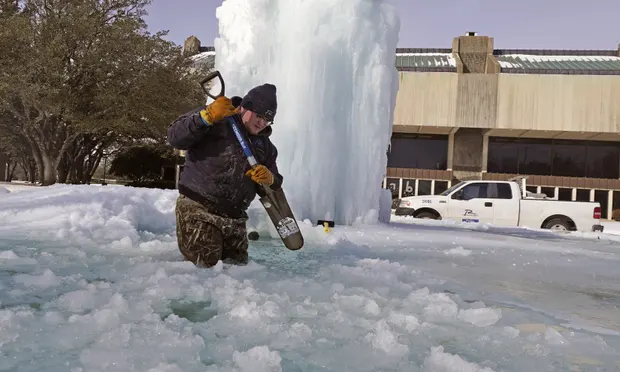 | Climate change and Artic heat: The reasons behind snowstorm in Texas According to the scientists, there is a connection between climate change and the rapid heating of the Artic are the reasons for the winter storm ... |
 | World breaking news today (Feb 21): Biden declares major disaster in Texas World breaking news today (Feb 21): Biden declares major disaster in Texas. Meanwhile, Russia registers world's first case of human infection from new H5N8 bird ... |
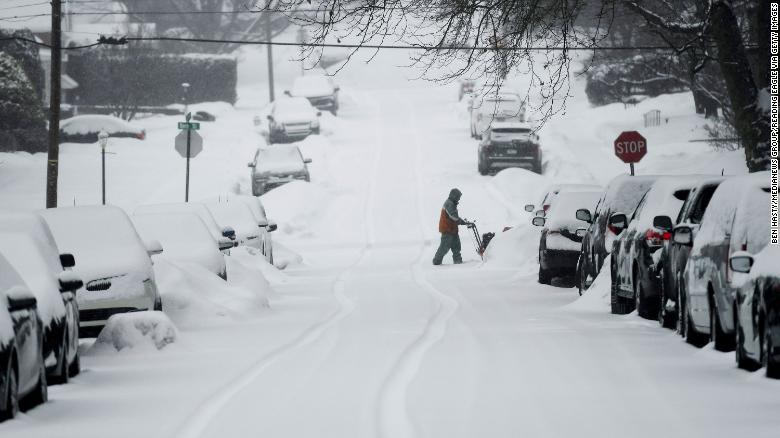 | Deadly winter storm leaves Texas struggle to find supplies and fight the freezing cold Winter Storm Uri hit huge swaths of the country, causing damaging ice in the Northwest and dumping snow across the Midwest and Northeast, with Texas ... |
Recommended
 World
World
Pakistan NCRC report explores emerging child rights issues
 World
World
"India has right to defend herself against terror," says German Foreign Minister, endorses Op Sindoor
 World
World
‘We stand with India’: Japan, UAE back New Delhi over its global outreach against terror
 World
World
'Action Was Entirely Justifiable': Former US NSA John Bolton Backs India's Right After Pahalgam Attack
Popular article
 World
World
US, China Conclude Trade Talks with Positive Outcome
 World
World
Nifty, Sensex jumped more than 2% in opening as India-Pakistan tensions ease
 World
World
Easing of US-China Tariffs: Markets React Positively, Experts Remain Cautious
 World
World

